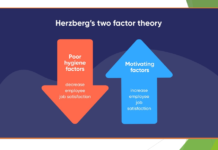Contents
The Role of Annual Performance Evaluations
Annual performance evaluations are pivotal in fostering employee growth and development. These evaluations offer a comprehensive and structured opportunity to assess progress, identify strengths, and address areas needing improvement. Importantly, they serve as a formalized method to train, counsel, and motivate staff, thereby aligning individual performance with organizational goals.
However, the importance of annual performance evaluations should not overshadow the necessity for regular feedback throughout the year. Continuous feedback creates an environment of constant development, enabling employees to adjust and improve their performance incrementally rather than waiting for an annual review. This practice mitigates the risk of performance reviews becoming a source of unexpected criticism, which can be demotivating and potentially counterproductive.
Daily supervision and periodic check-ins can pinpoint performance issues early, allowing for timely interventions and corrections. Immediate and ongoing feedback ensures that employees are aware of their performance metrics and expectations, fostering a culture of transparency and ongoing improvement. Supervisors can use these regular interactions to guide employees, reinforce positive behaviors, and promptly address any deficiencies.
This continuous loop of feedback and adjustment ensures that the annual performance evaluation serves more as a comprehensive summary of the year’s achievements and areas for growth, rather than a litany of new grievances. It also reinforces a consistent approach to employee development, wherein the annual review is a culmination of regular, constructive feedback rather than a stand-alone event.
In conclusion, the role of annual performance evaluations should be viewed within the larger context of ongoing employee development. By integrating regular feedback and corrective measures as part of daily supervision, organizations can maximize the impact of their performance reviews, ensuring they act as a constructive summary of continuous development efforts rather than an isolated assessment.
Importance of Objective and Measurable Criteria
To ensure fairness and transparency in performance evaluations, it is paramount that they are based on sound, measurable, and objective criteria. Both the supervisor and the employee must have a clear understanding of these criteria from the outset. Defining performance indicators that are specific, attainable, and relevant to the employee’s role and responsibilities is essential. This approach not only sets clear expectations but also ensures that the performance evaluation process aligns closely with organizational goals.
The utilization of objective criteria helps in removing any subjective biases that might influence the evaluation. By focusing on measurable outcomes, organizations can ensure that all employees are assessed based on their actual performance rather than on personal opinions. This fairness fosters a culture of accountability and trust within the organization, motivating employees to perform at their best knowing that their efforts will be recognized and rewarded accurately.
Furthermore, it is important that the performance indicators are consistently applied across the board. Consistency in evaluation helps prevent any discrepancies or unfair treatment among employees, which can otherwise lead to dissatisfaction and demotivation. Aligning these criteria with the strategic objectives of the organization ensures that each employee’s contributions are in line with broader company goals, thereby driving overall business success.
Transparent communication of performance criteria is another crucial aspect. Regular discussions between supervisors and employees about performance expectations help in maintaining clarity and understanding. Employees should be made aware of what is expected of them, and supervisors should provide continuous feedback throughout the evaluation period. This ongoing dialogue ensures that there are no surprises during the annual evaluation and provides employees with the opportunity to improve and develop their skills continuously.
In summary, utilizing objective and measurable criteria in performance evaluations not only promotes fairness and transparency but also aligns individual performance with the organization’s strategic objectives. This approach is fundamental in fostering a motivated, productive, and engaged workforce.
Ongoing Feedback and Supervision
While annual performance evaluations are essential for documenting an employee’s achievements and areas for growth, they represent only a snapshot in time. For organizations aiming to foster a culture of continuous improvement and open communication, integrating ongoing feedback and supervision is imperative. Continuous feedback facilitates immediate corrections and enhances an employee’s ability to meet and exceed expectations throughout the year. This approach builds a dynamic and responsive workforce where minor performance issues can be addressed promptly, preventing them from escalating into significant problems.
Regular check-ins between supervisors and employees are a cornerstone of this process. These meetings provide a platform for both parties to discuss progress, set expectations, and adjust goals as needed. Constructive criticism during these sessions helps employees understand their areas for development without waiting for the annual review. Additionally, instant recognition of exemplary performance can be more motivating than delayed praise, reinforcing positive behaviors and accomplishments effectively. By prioritizing timely and specific feedback, managers demonstrate their commitment to employees’ success, thereby boosting morale and fostering loyalty.
Furthermore, a systematic approach to ongoing supervision ensures that performance management is proactive rather than reactive. Managers can identify training needs and provide development opportunities tailored to individual employees, thereby enhancing their skills and capabilities. This proactive stance also allows for the early detection of any impediments to performance, enabling swift intervention to mitigate these issues. Notably, the emphasis on regular dialogue enhances transparency and trust within the organization, which are critical components for a healthy workplace culture.
In conclusion, integrating continuous feedback and supervision with annual performance evaluations establishes a robust framework for employee development. It ensures that performance issues are managed in real-time, exceptional achievements are recognized promptly, and a culture of ongoing development and open communication is promoted. This comprehensive approach not only drives individual performance but also propels the organization towards its strategic objectives.
Professional Approach to Negative Feedback
One of the most critical aspects of annual performance evaluations is the manner in which supervisors deliver negative feedback. Maintaining a professional and objective tone is crucial, as it helps to ensure that the feedback is perceived as fair and actionable rather than personal or biased. It is essential to focus on performance metrics and concrete examples, avoiding subjective comments that may be construed as personal judgments about an employee’s potential.
When addressing areas requiring improvement, it is beneficial to ground the feedback in specific, observable behaviors and outcomes. By doing so, the conversation stays focused on professional development rather than personal attributes. For instance, rather than stating that an employee lacks initiative, a supervisor could highlight a specific project where the employee could have taken more proactive steps, explaining what actions would have been more beneficial. This approach not only clarifies expectations but also provides the employee with a clear roadmap for improvement.
Constructive criticism should always be paired with actionable advice and support strategies. Offering suggestions on how to improve performance, such as additional training opportunities or mentorship, can help the employee feel supported rather than criticized. It demonstrates that the organization is invested in their growth and development. This supportive stance fosters a more positive and conducive environment for professional growth, ultimately benefiting both the employee and the organization as a whole.
In summary, maintaining a professional approach to negative feedback is fundamental during performance evaluations. By focusing on specific performance metrics and providing constructive advice, supervisors can deliver feedback that is both respectful and effective. This disciplined approach not only mitigates the potential for demoralization but also encourages continuous improvement and growth among employees.



